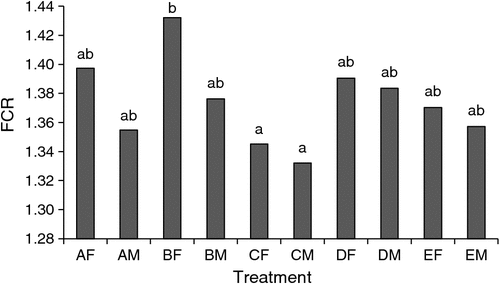Multiple treatments targeting the immune system of commercially-reared weanling pigs
J. L. Black A D , C. L. Collins B , D. J. Henman B and S. Diffey CA John L Black Consulting, Warrimoo, NSW 2774.
B Rivalea (Australia), Corowa, NSW 2646.
C Curtin University, Bentley, WA 6102.
D Corresponding author. Email: jblack@pnc.com.au
Animal Production Science 55(12) 1458-1458 https://doi.org/10.1071/ANv55n12Ab075
Published: 11 November 2015
Pigs exposed to conventional housing systems with high microbial loads grow around 20% more slowly than gnotobiotic pigs or pigs in ‘clean’ environments (Black and Pluske 2011). In-feed antibiotics reduce microbial numbers and modulate the immune system, but result in concerns about microbial resistance to antibiotics in human health (Collignon 2003). Black and Pluske (2011) suggested using a multi-targeted approach to reduce microbial load in pigs, reduce release of pro-inflammatory cytokines and subsequent production of prostaglandin E2 (PGE2), which causes anorexia, fever and decreases protein synthesis. The hypothesis was that multiple treatments targeting the immune system of pigs would improve performance.
Treatments initially identified were: i) fatty acids monolaurin and monomyristin (2:1), which are toxic to most microbes; ii) a n-6:n-3 ratio <4:1, to reduce pro-inflammatory cytokine release; iii) aspirin, to reduce pro-inflammatory cytokines and inhibit PGE2 formation; and iv) meloxicam, to inhibit COX-2 action and restrict PGE2 synthesis. Due to regulatory and product availability constraints, aspirin, meloxicam, and monomyristin could not be evaluated in this study. Male (M) and female (F) pigs (1,240 of PrimeGro™ Genetics, initial weight 8.2 ± 1.25 kg, mean ± SE) were allocated to five treatments in a designed experiment with nine replicates in three sheds and 13-14 pigs/pen. The treatments, offered feed ad libitum, were: (A) monolaurin at 2% of a weaner diet (≈15.3 MJ/kg digestible energy (DE), 216 g/kg crude protein (CP), 13.1 g/kg available lysine); (B) fish-safflower oils with a n-6:n-3 ratio of 2 : 1 at 6%; (C) treatments A and B combined; (D) negative control diet with no antibiotics, zinc oxide and a n-6:n-3 ratio of 20.7:1 at 6%; and (E) positive control, being the weaner diet with sulphatrim (0.1%). Pigs were initially weighed individually, then in pens after 14 days and individually at the end of the experiment (28 days). Pen feed intake was measured from d 0-14 and 14-28 and averaged for the number of pig-days in each pen. A linear mixed model, analogous to ANOVA, was fitted to average daily feed intake (ADFI), average daily gain (ADG) and feed conversion ratio (FCR). The experimental unit was the pen and the observational unit was a pig in a pen. Pig initial weight, pig gender, shed, pen and pen row were included in the model. Treatment did not affect (P>0.05) ADFI, but ADG tended to be greater (results not shown) and FCR lower (P < 0.05) for treatment C (Fig. 1).

|
Multiple treatments aimed at modifying microbial load and the immune response may allow removal of antibiotics from the diets of young pigs. It is anticipated that FCR would be further enhanced if aspirin, COX-2 inhibitors and monomyristin were included in diets aimed at modifying the immune response.
References
Black JL, Pluske JR (2011) Review of innate immunity in pigs. Final Report, Australian Pork Limited. Canberra, Australia.Collignon P (2003) Australasian Pig Science Association Manipulating Pig Production IX, 73–80. [Ed J.E. Paterson.]
This project was funded in part by Australian Pork Limited.


